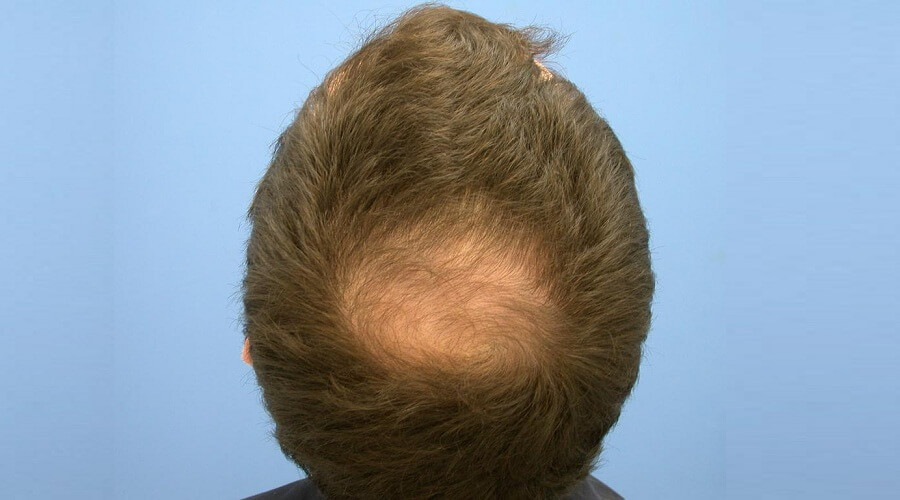Crown Hair Restoration
The crown, also known as the vertex, is an area of the scalp that can require hair transplantation either in isolation or in combination with other regions of the scalp. Crown hair transplant procedures are perhaps the most technically demanding of all types of hair restoration procedures due to the fact that extreme hair angle changes occur in the crown area in a whorl, or spiral, a pattern which must be meticulously recreated for a seamlessly natural result. Additionally, the crown typically has extensive areas of baldness that require transplantation, resulting in the need for a large number of grafts in one area.
Crown Hair Transplant Procedure
There are a few basic facts about crown hair restoration that every individual should know before contemplating having a crown hair replacement procedure. These include the following:
Crown Transplant Technique
Achieving desired results during crown hair replacement can be rather tricky and requires the technical skill and artistic vision of a hair transplant specialist like Dr. Sourav Dr. Sourav fully understands natural patterns of hair loss in men, a key element in re-creating hair growth in the crown that looks natural and can be maintained over time. This creates the most effective -dimensional and three-dimensional results and provides hair restoration results that will age well over time.
Crown hair transplant procedures may differ in how hair follicles are extracted from the donor site and can be done using the follicular unit extraction method or traditional linear harvesting. No matter the harvesting method, grafts are meticulously prepared for implantation by Dr. Sourav experienced team and are expertly placed to achieve perfect angles, direction, pattern and graft-to-site fit.
One of the keys to Dr. Sourav's exceptional hair transplant crown results is the fact that he is involved in every step of the process and does not hand-off any part of the procedure to a rotating team, as is common in other hair restoration practices.Dr. Sourav performs all procedures at his fully-accredited surgical center, providing effective sedation so patients experience no discomfort during surgery.
Cost of Crown Hair Transplantation
Crown hair transplant cost can vary greatly from patient to patient, based primarily on the area of hair loss to be covered and the hair density needed to achieve natural results. These factors will affect the number of grafts required during crown transplant surgery, and may even dictate that more than one procedure be performed. Due to the individualized nature of crown hair transplantation costs, details will be discussed with you during your initial consultation with Dr. Sourav.
Causes of Crown Hair Loss
Many men experience hair loss in the crown area due to traditional male pattern baldness. Women can also experience hair loss in the crown area as the result of a number of conditions, although hair loss is typically more dispersed than the concentrated balding pattern seen in men. Some conditions that may result in hair loss in the crown area include alopecia areata, anagen hair loss, cicatricial alopecias, disorders of hair growth, inflammatory scalp, telogen hair loss, tinea capitis, traction alopecia and trichotillomania. Depending on their nature and stage of progression, some of these scalp conditions can only be treated with medicine while others allow for surgical treatment. Dr. Sourav is trained to make the judgment and thereby ensures safe and successful treatment.
Determining whether hair restoration surgery is the best option to treat hair loss in the crown area must carefully be considered based on a number of factors, including the extent of hair loss, the likelihood of future hair loss (and the possibility of having enough donor hair over time to replace new balding areas), and the ability to create natural-looking hair patterns in the crown area using hair transplantation. Dr. Sourav will advise you on the best crown hair restoration options for you during your initial consultation.
Crown Hair Transplant Recovery
Crown hair transplant recovery is generally similar to recovery from other types of hair transplant surgery. Recovery is dependent partially on the method of donor hair harvesting (linear harvesting or follicular unit extraction) as well as the size of the coverage area and the number of grafts required. However, it typically only takes less than 24 hours to recover from hair transplant surgery. By the day after your surgery, you should be able to resume most daily activities, although it is recommended that you hold off on strenuous activities for a week to prevent any accidental injury and reduce the risk of bleeding. You can return to work on the day following surgery, although many people choose to take a few days off following the procedure. Otherwise, you can expect to have some tiny scabbing in the transplanted area for up to a week, will have no bandages, and can wash your hair on the day following surgery. You can wear a hat or cap immediately after surgery if you wish to conceal any scabs.

